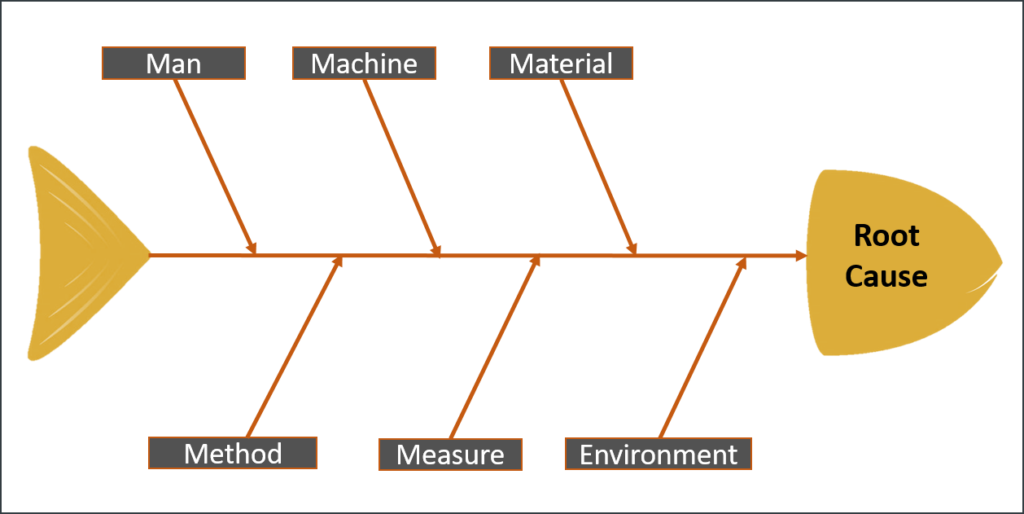In any organization, identifying the root cause of a problem is crucial for efficient problem-solving and continuous improvement. This is where cause analysis tools come into play. These powerful tools help delve deep into the underlying causes of issues, allowing businesses to address them effectively and prevent recurring problems. This extensive blog article will delve into the benefits of utilizing cause analysis tools and various techniques employed for cause analysis and provide insights into effectively implementing these tools. Whether you are a quality manager, a process improvement professional, or simply interested in enhancing problem-solving skills, this information will help to unleash the true power of cause analysis tools.
What are Cause Analysis Tools?
Cause analysis tools are valuable instruments for thoroughly examining the root causes behind a problem or situation. These powerful tools help individuals and organizations identify and understand the root causes of problems and issues. They provide a systematic approach to problem-solving, allowing for a thorough examination of the underlying factors contributing to a particular outcome. Cause analysis tools come in various forms, such as fishbone diagrams, 5 Whys analysis, fault tree analysis, and Pareto charts. Each tool has unique benefits and techniques, but they all share the goal of uncovering the true causes behind a problem rather than just addressing the symptoms.
What is Root Cause Analysis (RCA)?
Root Cause Analysis is a comprehensive technique to identify the fundamental reason behind an issue or incident. It employs various tools, including brainstorming, data analysis, and cause-and-effect analysis, to trace back to the core problem. Organizations can establish long-term solutions by addressing the root cause rather than treating symptoms. RCA is a thorough approach to problem-solving, providing lasting results.
Techniques for effective Root Cause Analysis:
Six primary tools of root cause analysis are employed in the process of identifying the underlying causes of an issue.
1. Fishbone Diagram (Ishikawa or Cause-and-Effect Diagram):

The Fishbone Diagram is a visual tool that aids in identifying potential root causes of a problem. It uses a fishbone-shaped structure with main branches representing categories such as man, materials, machine, and environment. Teams brainstorm and identify potential causes within each category to comprehensively understand the issue. This technique helps create a structured approach to uncovering the underlying factors contributing to a problem. Among Six Sigma tools, the fishbone diagram is the most frequently employed for cause-and-effect analysis.
2. 5 Whys Analysis:

The 5 Whys technique is about asking “why” multiple times to delve deeper into the underlying causes of a problem. Teams peel back the layers and uncover the root cause by asking multiple questions. It is crucial to continue asking “why” until reaching a point where actionable steps can be taken to resolve the issue. This method encourages a thorough investigation into the problem’s origins. This technique is applied for an in-depth analysis of the findings derived from a Pareto chart utilized in Six Sigma.
3. Pareto Analysis:

Pareto Analysis is a technique for prioritizing causes by identifying the vital few factors that contribute to the majority of the problem. It utilizes a Pareto chart, displaying causes in descending order of frequency or impact. Teams can focus on addressing the most significant contributors optimizing resource allocation for maximum impact. Pareto Analysis provides a clear view of where to concentrate problem-solving efforts.
4. Failure Mode and Effects Analysis (FMEA):

FMEA is a proactive technique to identify and mitigate potential failures or risks. It is utilized in the Six Sigma DMAIC cycle analysis stage to assess the potential impact of process failures. It involves assessing the severity, occurrence, and detection of identified failure modes to prioritize actions. FMEA helps teams systematically analyze potential causes and address risks before they become problems.
5. Fault Tree Analysis:

Fault tree analysis is an alternative approach for pinpointing the root cause of a specific problem. It employs Boolean logic to identify the cause behind any unwanted event. This technique constructs a diagram resembling a tree, with all potential causes documented as branches.
6. Scatter Plot Diagram:

A scatter diagram visually represents data, displaying two numerical variables on each axis to examine their relationship. It is a valuable tool in Six Sigma for analyzing problems. Scatter plots reveal correlations between variables, which can be positive, negative, or nonexistent. In Six Sigma, scatter plots visually demonstrate how a problem and its potential causes correlate, aiding teams in prioritizing and addressing the most impactful causes first.
Benefits of Utilizing Cause Analysis Tools
- Identify root causes of problems.
- Implement targeted solutions.
- Improve efficiency and productivity.
- Streamline operations and save time and money.
- Foster a culture of continuous improvement.
- Encourage innovation and growth.
- Enhance decision-making with data-driven insights.
- Mitigate risks through informed decisions.
- Improve customer satisfaction and loyalty.
Key Principles for Effective Root Cause Analysis:
- Address root causes, while acknowledging the value of short-term symptom relief.
- Recognize the presence of multiple root causes in many situations.
- Concentrate on understanding the “how” and “why” of events, rather than assigning blame to individuals.
- Adopt a systematic approach, relying on concrete cause-and-effect evidence to support root cause findings.
- Supply sufficient information to guide corrective actions effectively.
- Think about prevention or replication of root causes for future scenarios.
Implementing Cause Analysis Tools
Implementing cause analysis tools in your organization can be a game-changer in identifying and addressing the root causes of problems or issues. These tools provide a structured approach to problem-solving and enable teams to dig deeper into the underlying factors that contribute to a particular issue.
By following these steps, any organization can effectively harness the benefits of these tools and foster a culture of continuous improvement.
- Ensure all relevant stakeholders (management, team leaders, employees) support cause analysis tools.
- Provide training and support to team members using these tools. Conduct workshops to familiarize them with techniques and emphasize a proactive, collaborative approach.
- Begin with more straightforward issues to build team confidence. Gradually tackle more complex areas as competence grows.
- Encourage transparent communication and teamwork among team members. This nurtures a culture of learning and improvement
- Hold regular meetings for progress tracking and challenge identification.
- Establish a system for documenting and sharing findings and solutions. Create a knowledge repository for future reference, ensuring ongoing improvement.
Conclusion
In conclusion, cause analysis tools can be potent in uncovering the root causes of problems, identifying areas for improvement, and driving effective solutions. Using these tools, businesses can better understand the factors contributing to issues and develop targeted strategies to address them. The benefits of cause analysis tools are undeniable. They provide a systematic approach to problem-solving, enabling organizations to move beyond surface-level symptoms and identify the underlying causes. This allows for more impactful and sustainable solutions to be implemented.
Successfully utilizing cause analysis tools demands dedication and commitment from every level of the organization. Creating a supportive environment that encourages using these tools and provides the necessary resources and training is essential. Leadership buy-in is crucial in driving the adoption and integration of cause analysis tools into the organization’s problem solving processes.


